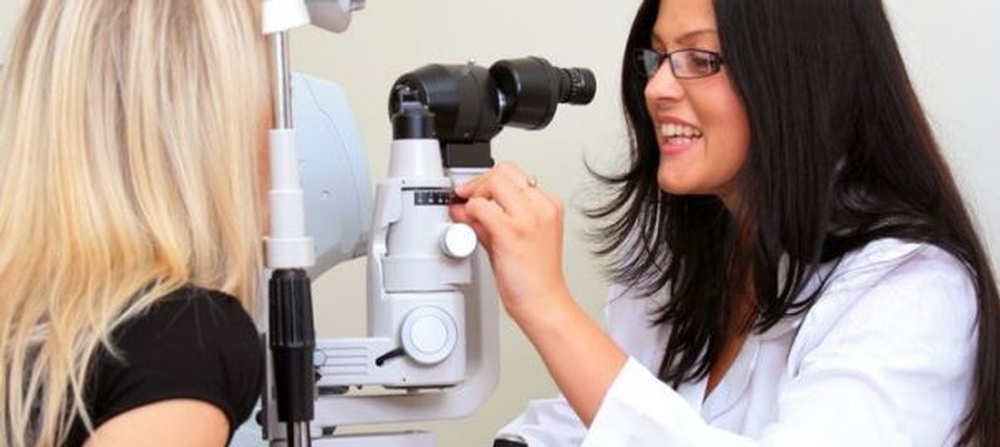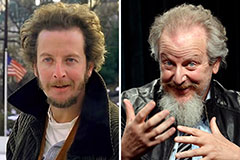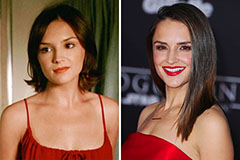The Comprehensive Eye Exam: What to Anticipate Throughout Your Visit to the Eye Doctor
A browse through to the eye doctor for a comprehensive eye test is more than a routine examination; it is a crucial action in securing your aesthetic health. What exactly takes place during the eye wellness analysis, and exactly how does it affect the prescription procedure?
Initial Assessment
The first consultation during an eye examination acts as an important structure for recognizing an individual's aesthetic wellness requirements. This stage sets the tone for the whole evaluation process, enabling the optometrist to gather important info about the individual's medical background, way of life, and certain vision problems. By thoroughly assessing any type of pre-existing problems, drugs, or previous surgical procedures, the eye treatment specialist can tailor the examination to resolve individual needs efficiently.

Moreover, the initial assessment is a chance for clients to voice any concerns or problems, promoting a collective partnership with their doctor. This interaction not just ensures that the client really feels notified and comfortable but likewise empowers them to get involved proactively in their eye wellness administration. Collectively, these conversations make it possible for the eye doctor to devise an individualized examination plan, making certain ideal care and accurate diagnosis.
Aesthetic Acuity Examination
Beginning the core parts of an eye assessment, the aesthetic acuity examination is designed to analyze the intensity and clearness of a patient's vision. This vital analysis assists identify how well a person can recognize letters or icons at a standardized range, usually making use of a Snellen chart (Optometrist Riverside). The graph comprises rows of letters that decrease in size from leading to bottom, with the individual positioned at a traditional range of 20 feet
Throughout the examination, the individual is asked to cover one eye and check out aloud the tiniest line of letters they can see plainly. This process is repeated for the various other eye. The results are tape-recorded as a portion, with 20/20 vision showing typical aesthetic acuity-- where the patient can see at 20 feet what a person with regular vision can see at that range.
The aesthetic acuity test additionally identifies possible refractive errors such as myopia, hyperopia, or astigmatism, which could require corrective lenses. By establishing a baseline of aesthetic performance, the examination is a crucial analysis tool that helps the eye care specialist in developing a suitable treatment strategy tailored to the individual's unique visual requirements.
Eye Wellness Analysis
Adhering to the aesthetic skill examination, a thorough eye wellness assessment is performed to make sure the overall well-being of the eyes. This important sector of the eye examination includes an extensive examination of both the internal and outside structures of the eye. The eye doctor or optometrist begins by taking a look at the eyelids, cornea, conjunctiva, and sclera for any signs of infection, inflammation, or problems. Using specific devices like a slit light, the practitioner acquires a multiplied view of the eye's anatomy, making it possible for detailed examination.
Next, interest changes to the internal structures. Through using ophthalmoscopy or fundus photography, the retina, optic nerve, and capillary are diligently assessed. This action is vital for recognizing problems such as retinal detachment, glaucoma, or diabetic retinopathy. In several cases, student dilation is carried out to boost visibility of the inner eye frameworks, although this might lead to momentary light sensitivity for the client.
Additionally, intraocular pressure is determined to screen for glaucoma threat. This is typically done utilizing tonometry, which can identify elevated stress degrees that may recommend potential damages to the optic nerve. Collectively, these evaluations create an extensive analysis to preserve eye health.
Refraction and Prescription
Refraction is an advanced treatment conducted by eye treatment experts to determine the accurate lens power required to fix refractive mistakes such as myopia, astigmatism, hyperopia, and presbyopia. The objective Recommended Site of this treatment is to evaluate exactly how light bends as it passes with the eye, allowing the practitioner to determine whether rehabilitative lenses are required for boosted aesthetic skill.
During the refraction procedure, the person is asked to look through a phoropter, a tool which contains various lenses. The specialist will systematically change these lenses and ask the patient to compare clearness in between alternatives until the finest possible vision is attained. This treatment is important in crafting an exact prescription that specifies the suitable lens power for spectacles or get in touch with lenses.
The prescription originated from this treatment not only enhances vision however additionally functions as a foundation for selecting appropriate restorative glasses. It is important to ensure that prescriptions are consistently updated, as adjustments in vision can take place with time, emphasizing the value of regular eye examinations. This careful attention to detail aids preserve clear, comfortable vision in life.
Follow-Up Suggestions

During a follow-up see, the eye physician will conduct a series of tests to evaluate aesthetic skill and look for any kind of changes in vision that could necessitate an upgrade to the prescription. Furthermore, the follow-up offers a chance to go over any type of discomfort or issues experienced with current eyewear. Changes can be made to ensure convenience and effectiveness, whether with lens adjustment or frame changes.
For individuals with recurring conditions such as glaucoma, diabetes-related eye concerns, or macular degeneration, more constant follow-ups may be necessary. These visits are essential for handling and possibly slowing the development of eye condition. Sticking to these suggestions can significantly contribute to keeping visual health and wellness and stopping long-lasting problems.
Final Thought
The detailed eye test is an important process for keeping visual wellness, including a detailed evaluation of medical background and vision concerns. Secret elements include the aesthetic skill test, which reviews eyesight clearness, and the eye health analysis, which takes a look resource at the general condition of the eyes. Refraction tests help establish the precise lens prescription essential for optimal vision correction. Follow-up suggestions supply guidance for recurring eye treatment, guaranteeing that any type of potential problems are addressed quickly and successfully.
A see to the eye doctor for an extensive eye examination is more than a regular exam; it is a critical step pop over to this site in protecting your aesthetic health.Kicking off the core parts of an eye exam, the visual acuity examination is developed to analyze the intensity and quality of a client's vision.Adhering to the aesthetic skill test, a detailed eye health assessment is conducted to guarantee the overall wellness of the eyes. These sees allow the eye care specialist to check adjustments in vision, update prescriptions, and assess the general wellness of the eyes. Key parts include the visual acuity examination, which examines sight quality, and the eye health and wellness evaluation, which checks out the total condition of the eyes.
 Daniel Stern Then & Now!
Daniel Stern Then & Now! Jonathan Lipnicki Then & Now!
Jonathan Lipnicki Then & Now! Judge Reinhold Then & Now!
Judge Reinhold Then & Now! Rachael Leigh Cook Then & Now!
Rachael Leigh Cook Then & Now! Erika Eleniak Then & Now!
Erika Eleniak Then & Now!